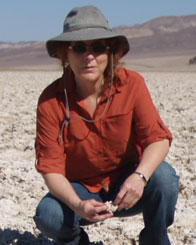
HuffPost Live’s segment about alien life on Earth. (Credit: HuffPost)
The Guardian points out:
If it turns out we have failed to realise that we have been sharing a planet with these shadowy lifeforms for eons, despite all the scientific advances of the 19th and 20th centuries, then we may need to think again about the way we hunt for life on other worlds. Robot spacecraft – such as the Mars rover Curiosity – are certainly sophisticated. But what chance do they have of detecting alien entities if the massed laboratories of modern science have not yet spotted them on our own planet?Life as we know it is what astrobiologists look for in the search for extraterrestrial life. But if an alternative form of life on Earth is discovered, it would clearly impact the search for life on other worlds. On the HuffPost Live segment, Cleland explains:

Professor Carol Cleland. (Credit: CU Boulder)
It’s certainly a lot easier to search for it on Earth than it is on Mars because we have all kinds of tools and technologies available for looking for it, whereas we have to design them especially and haul them to Mars to look for unfamiliar life on Mars. So if there’s the possibility that such life exists on Earth, and I think, theoretically, there’s no reason at this time to dismiss it, then it makes much more sense, and I think it’s much more likely we would detect it here on Earth. The problem, of course, is the signal for extant life on Earth is so strong that we have to figure out ways of recognizing unfamiliar life and discriminating them from familiar life. And that’s the really hard part.Scientists have proposed possible methods for detecting this “weird life,” but until it is detected, the shadow biosphere remains an interesting theory.
Source
No comments:
Post a Comment
Note: Only a member of this blog may post a comment.